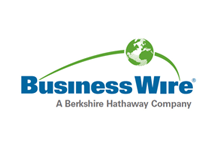Global Lyocell Fiber Market (2022 to 2027) - Industry Trends, Share, Size, Growth, Opportunity and Forecasts - ResearchAndMarkets.com
The "Lyocell Fiber Market: Global Industry Trends, Share, Size, Growth, Opportunity and Forecast 2022-2027" report has been added to ResearchAndMarkets.com's offering.
The global lyocell fiber market reached a value of US$ 1.13 Billion in 2021. Looking forward, the publisher expects the market to reach US$ 1.71 Billion by 2027, exhibiting a CAGR of 6.97% during 2022-2027.
Companies Mentioned
- Lenzing AG
- Acegreen Eco-Material Technology Co., Ltd.
- Aditya Birla Group
- Baoding Swan Fiber Co. Ltd.
- Chonbang Co., Ltd.
- Weiqiao Textile Company Limited
- Zhejiang Yaojiang Industrial Group Limited
- China Populus Textile Ltd.
- Great Duksan Corp.
- Qingdao Textiles Group Fiber Technology Co., Ltd.
- Smartfiber AG
- Acelon Chemicals & Fiber Corp.
Keeping in mind the uncertainties of COVID-19, they are continuously tracking and evaluating the direct as well as the indirect influence of the pandemic on different end use industries. These insights are included in the report as a major market contributor
Lyocell fiber is a type of rayon produced from bleached wood pulp, also known as dissolving pulp, which contains cellulose. First developed in 1972, this fiber is manufactured using the process of dry jet-wet spinning. Lyocell fiber exhibits similar properties as other cellulose fibers, including ramie, linen, viscose rayon and cotton.
It is lightweight, absorbent, breathable, soft, wrinkle-resistant, durable, capable of replicating a range of textures like silk, leather and suede, and can also be dyed in various colors. Nowadays, manufacturers are adopting natural practices to produce lyocell and eliminating the use of chemicals in the production to obtain organic certification
Lyocell fabric is utilized in a wide range of industries, including fashion, textile, medical, and paper and pulp. Due to its versatility, lyocell fiber is used as a substitute for cotton and silk to make sportswear, shirts, bed linens, denim, T-shirts, trousers and towels. Its high absorbency profile makes it an ideal material for medical dressings. Apart from this, with the rising environmental concerns, the demand for lyocell fiber is escalating across the globe.
Its main component, cellulose, is obtained from well-managed forests and its production does not generate by-products that are harmful to the health or the environment. Moreover, technological advancements have led to the manufacturing of lyocell fiber using advanced N-methyl morpholine-N-oxide (NMMO) technology, which is a simple, resource-conserving, and environment-friendly means of regenerating cellulose fiber
Key Question Answered in this Report
1. What was the size of the global lyocell fiber market in 2021?
2. What is the expected growth rate of the global lyocell fiber market during 2022-2027?
3. What are the key factors driving the global lyocell fiber market?
4. What has been the impact of COVID-19 on the global lyocell fiber market?
5. What is the breakup of the global lyocell fiber market based on the product?
6. What is the breakup of the global lyocell fiber market based on the application?
7. What are the key regions in the global lyocell fiber market?
8. Who are the key players/companies in the global lyocell fiber market?
Key Topics Covered:
1 Preface
2 Scope and Methodology
3 Executive Summary
4 Introduction
4.1 Overview
4.2 Properties
4.3 Key Industry Trends
5 Global Lyocell Fiber Market
5.1 Market Overview
5.2 Market Performance
5.3 Impact of COVID-19
5.4 Price Analysis
5.4.1 Key Price Indicators
5.4.2 Price Structure
5.4.3 Margin Analysis
5.5 Market Breakup by Product
5.6 Market Breakup by Application
5.7 Market Breakup by Region
5.8 Market Forecast
5.9 SWOT Analysis
5.10 Value Chain Analysis
5.11 Porters Five Forces Analysis
6 Market Breakup by Product
7 Market Breakup by Application
8 Market Breakup by Region
9 Lyocell Fiber Manufacturing Process
9.1 Product Overview
9.2 Raw Material Requirements
9.3 Manufacturing Process
9.4 Key Success and Risk Factors
10 Competitive Landscape
10.1 Market Structure
10.2 Key Players
10.3 Profiles of Key Players
For more information about this report visit https://www.researchandmarkets.com/r/4hvdjj
View source version on businesswire.com: https://www.businesswire.com/news/home/20220609005565/en/





